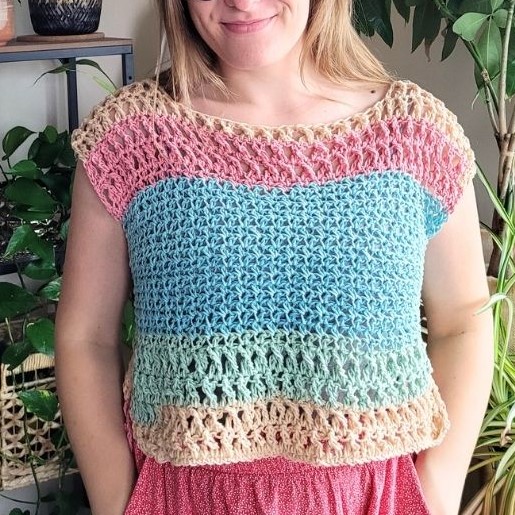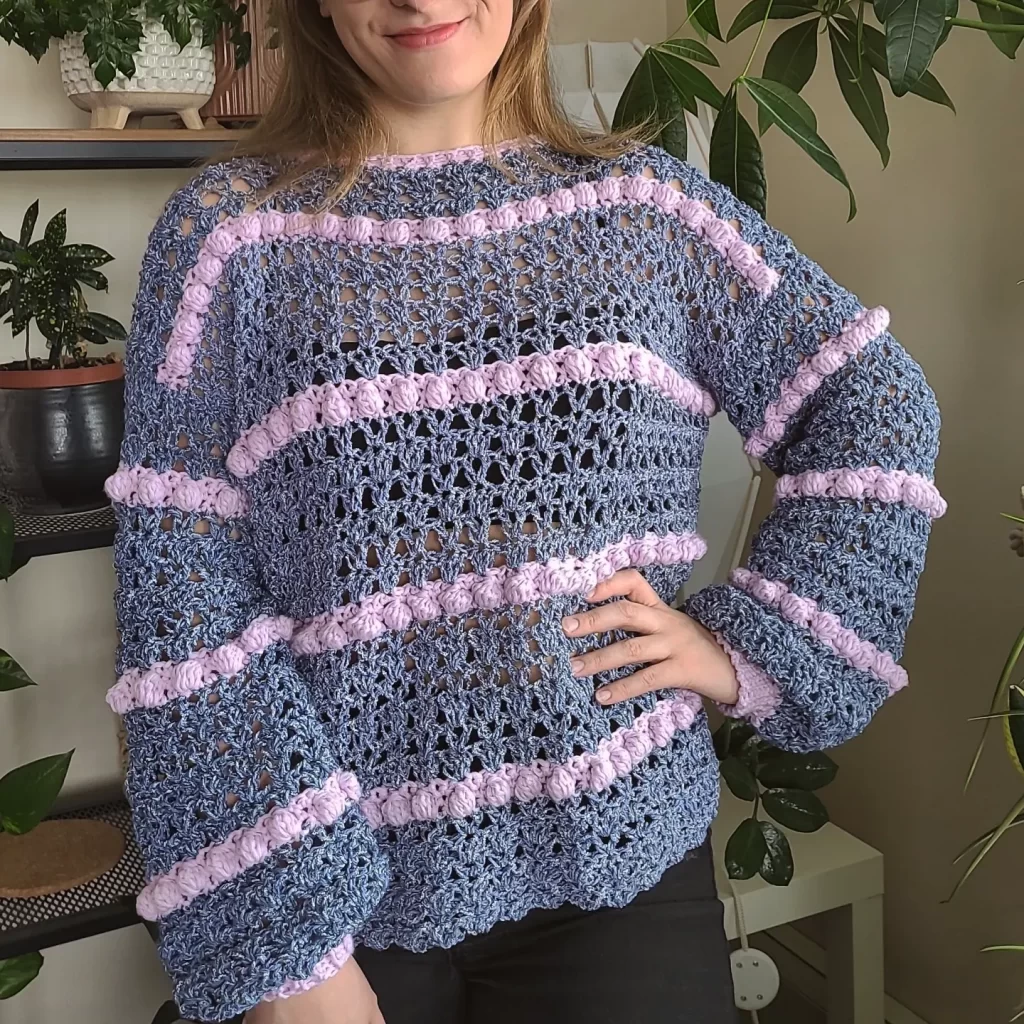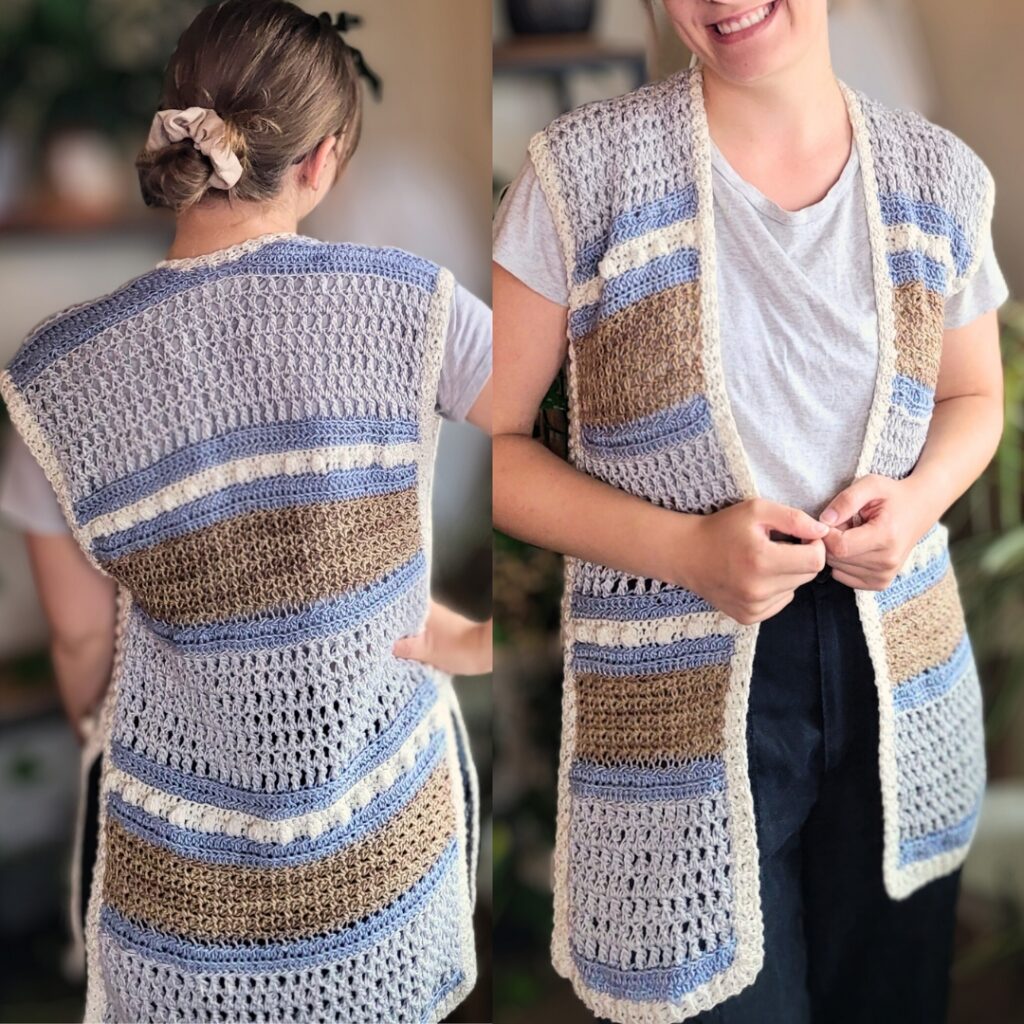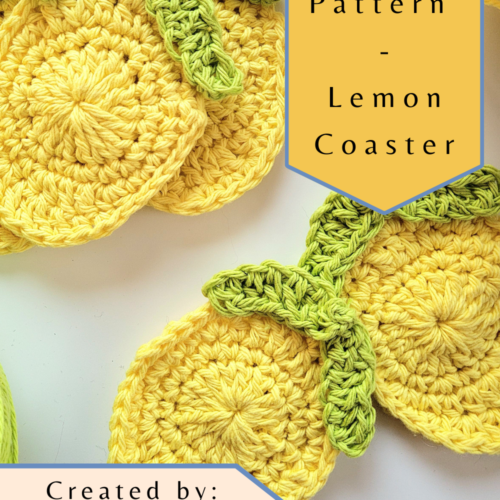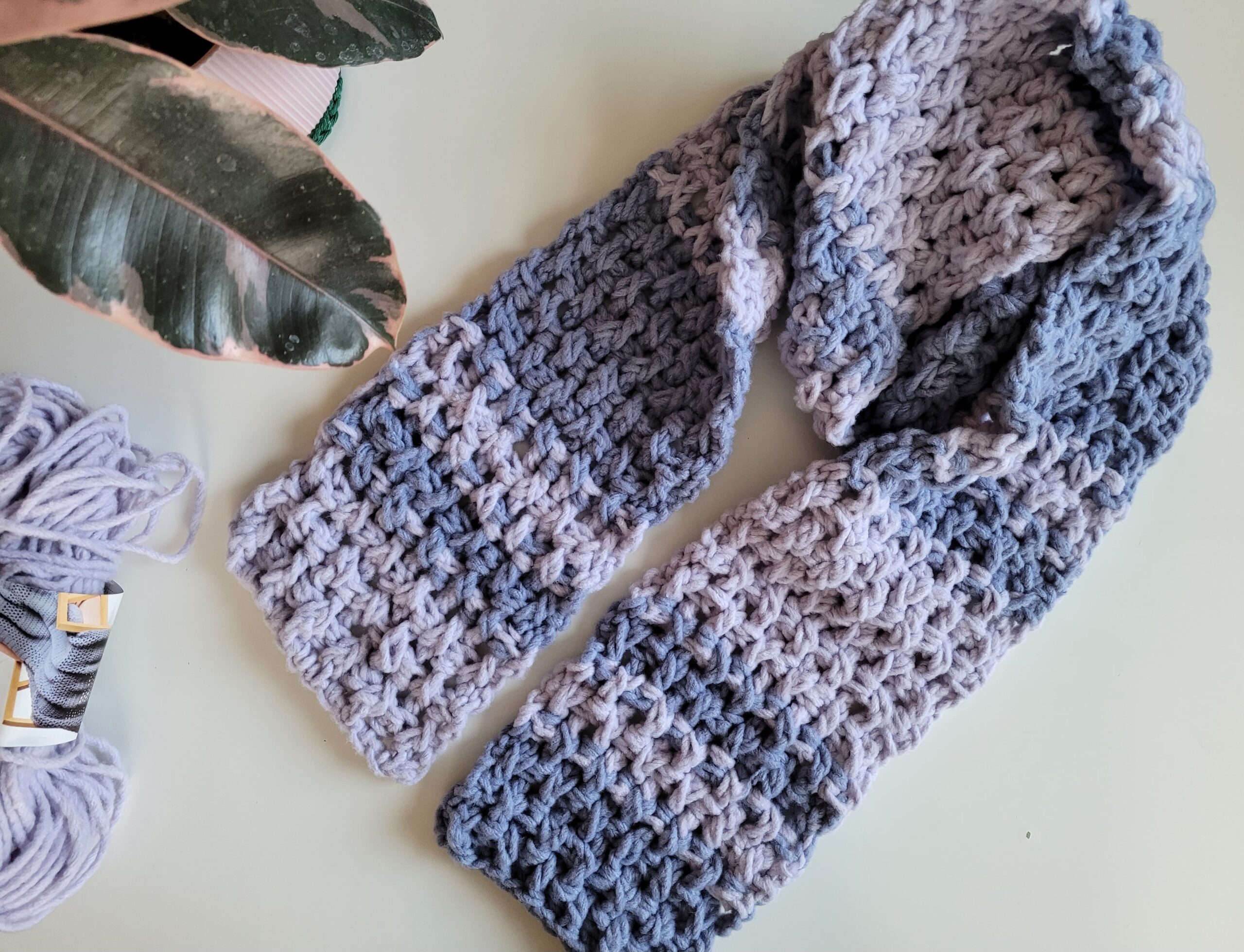by: Crochet With Cookie 🙂
Hi! And welcome to my very first Sentro/Addi Knitting Machine Vest tutorial! This is the Marina Vest and it is one of the projects I took on, on my Sentro machine after I got a crochet injury. I was no longer able to crochet for a while so I thought… well maybe I could whip out the Sentro Knitting Machine and create a new piece using that!
Therefore, here we are and I am so excited to share this vest with you!
The Marina Vest is very simple to create and be made in 4 different sizes – XS to XL. The size constraints exist only due to the limited number of needles on the machine – the Sentro Knitting Machine has a maximum of 48 needles, and the Addi King Knitting Machine has a maximum of 46 needles.

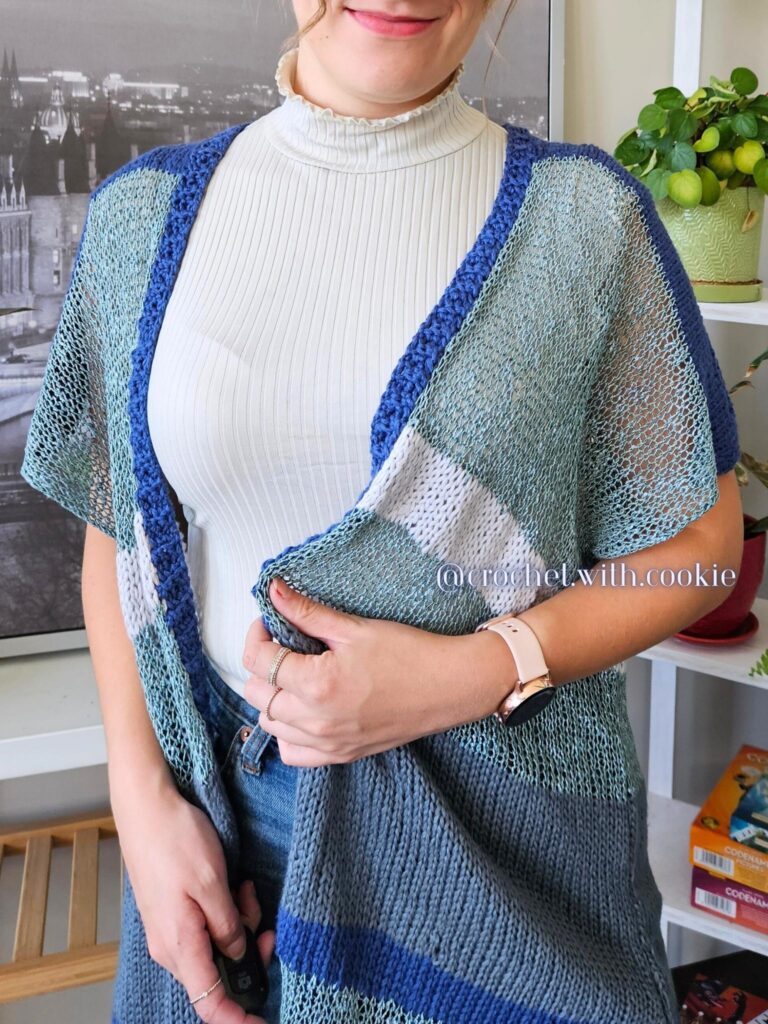
Crochet Skills Required:
The Marina Vest is created mostly using the Sentro Knitting Machine, but the finishing touches are done with a crochet hook. It is possible to complete this pattern with minimal crocheting, however it is recommended to have knowledge of the most basic crochet stitches – such as the single crochet, slip stitch and chain.
Knitting Machine Skills Required:
To create this garment you will need to have some simple knitting machine skills already, such as:
- Casting on, casting off
- Using scrap yarn (at the beginning and at the end of each panel)
- Changing colors
- Controlling tension on the machine for different yarn types
- Working on the “Flat Panel” setting on the knitting machine
Knitting Machine Required
To create the Marina Vest pattern you are required to have some sort of a circular knitting machine that has at least 46 needles.
I am personally a proud owner of the Sentro Knitting Machine! It works well and is the more cost conscious option. It has 48 needled (two more than the Addi option) and can create circular (tube) panels, as well as flat knit panels.
The other option for the circular knitting machine is the Addi Express King Knitting Machine. It has the capability to do repairs and comes with some spare needles if one breaks – which the Sentro Machine does not. It is also built a bit sturdier and feels a bit more professional – vs the Sentro which does feel and runs a bit more like a cool toy.
Nonetheless, both will do an excellent job for this project!
Please note that I myself am using the Sentro Machine and my calculations are done accordingly with the Sentro – minor adjustments (by 1 or two stitches might* need to be done for the Addi).
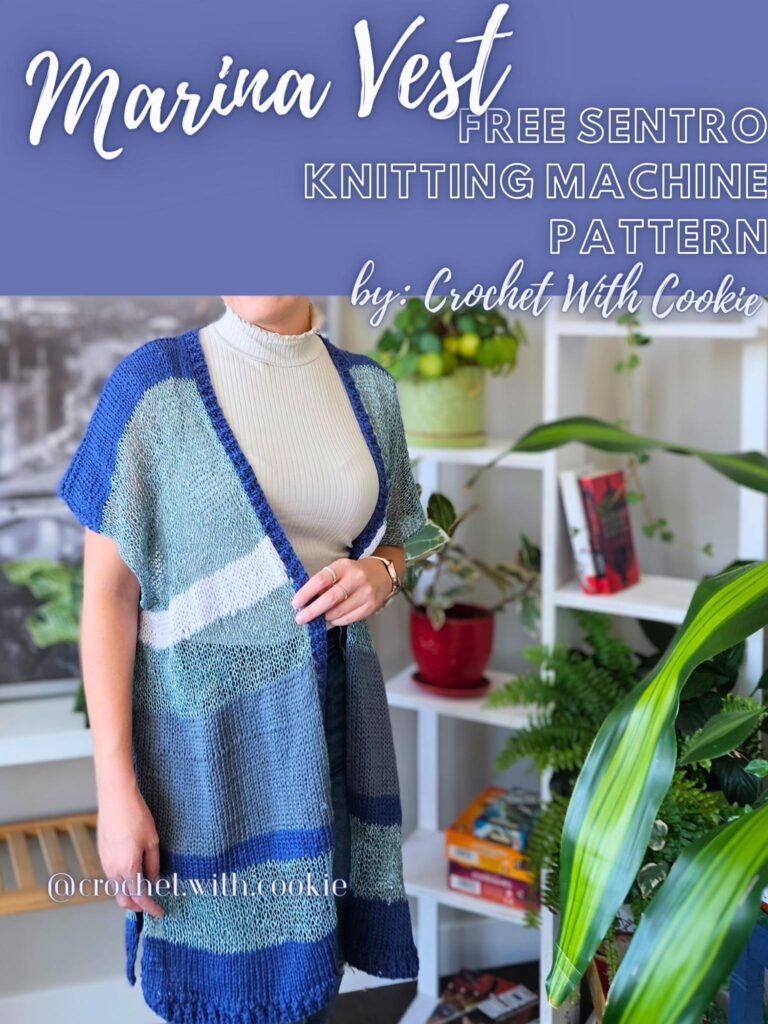
Other Materials Required:
- Yarn (see below)
- Scrap Yarn (See below)
- Hook (matching your yarn)
- Scissors
- Tapestry Needle
- Blocking Pads (Or exercise mats could be used as well)
- Blocking Combs

Stitches/Abbreviations (US Terms):
- ch – Chain
- st – Stitch
- sc – Single Crochet
- sc blo – Single Crochet Back Loop Only
- sl st – Slip Stitch
- WS – Wrong Side
- RS – Right Side
- rnd – Round
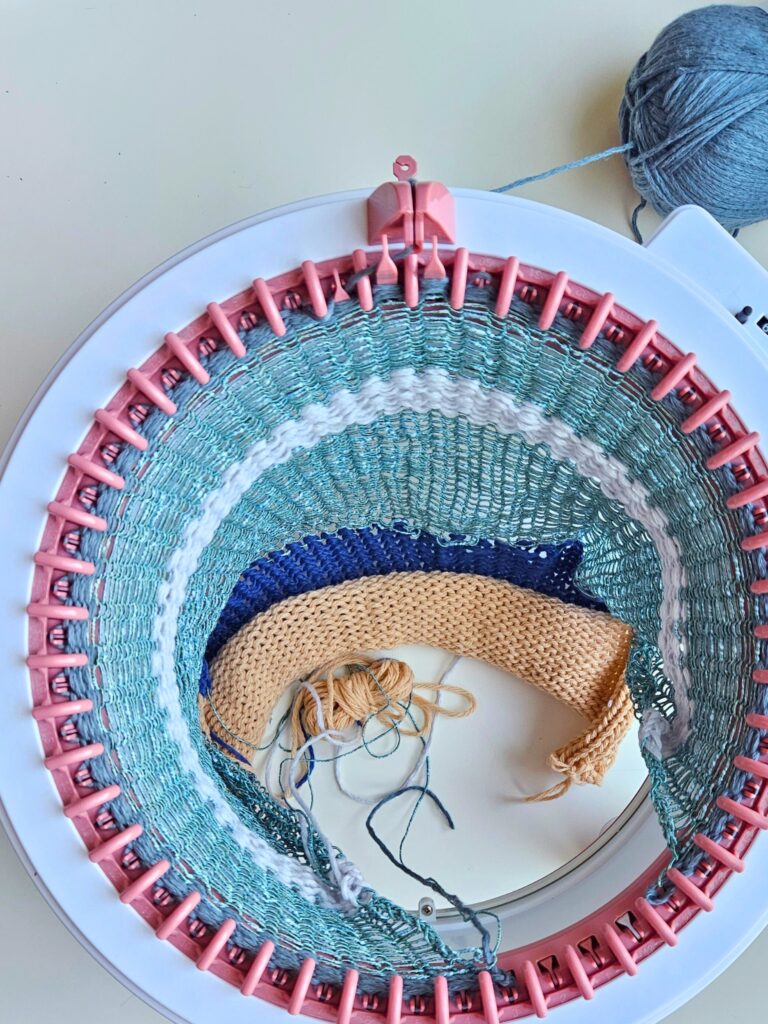
Scrap Yarn:
At the beginning of each panel and at the end, I strongly recommend using scrap yarn. Doing this will prevent curling at the top and bottom of the panels.
Another reason for using scrap yarn is that the machine tend to run a bit wonkier at the start – that way the tension and unevenness is all sorted out by the time that you get to the yarn you are using for your actual project.
Below are the same panels – on the left you have the panel with the scrap yarn still attached, and then on the right the panels after I have removed the scrap yarn. You’ll notice that the edges are nice and straight and there is no curling – which is exactly what we want!

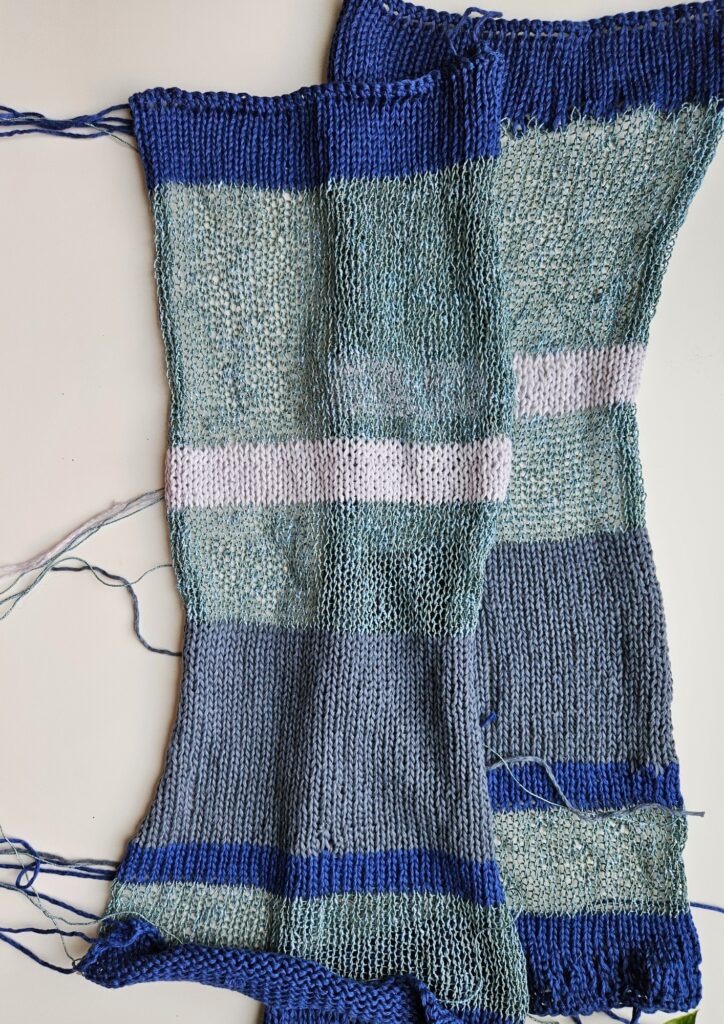

Yarn Requirements:
You will need four different colors of yarn to create the exact color block scheme as myself.
I am using specifically three of the same type of yarn – but different colors, and then one other stand out yarn. I am using the standout yarn in a much thinner weight than the other three – to create a loose fish net type texture just for parts of the garment.
I am using the Creme Cotton – By Loops & Threads (weight 4) for the three main colors. And using Seduce – By Berroco (weight 3) for the thinner yarn.
For me:
Color 1 – Navy (Crème Cotton – Loops & Threads)
Color 2 – Dreams (Seduce – Berocco)
Yarn Requirements According to Size:
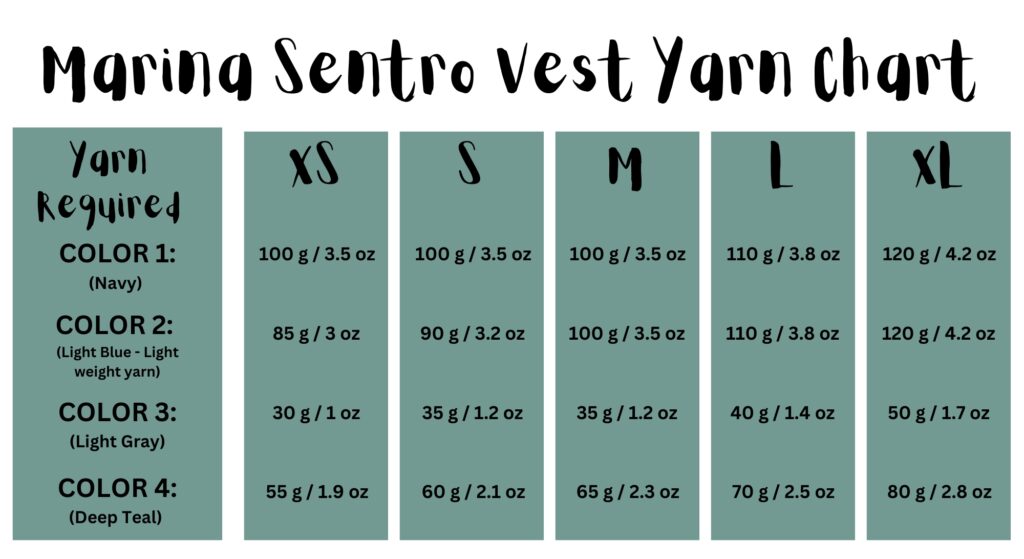
Sizing Chart:
Before starting the project, you will need to choose the proper size for your garment. Please keep in mind that each size has 6 inches of ease added into the calculation – if you would like less ease then size down. If you would like your garment to be even more loose – then size up.
Please note the number of stitches required for each size below.
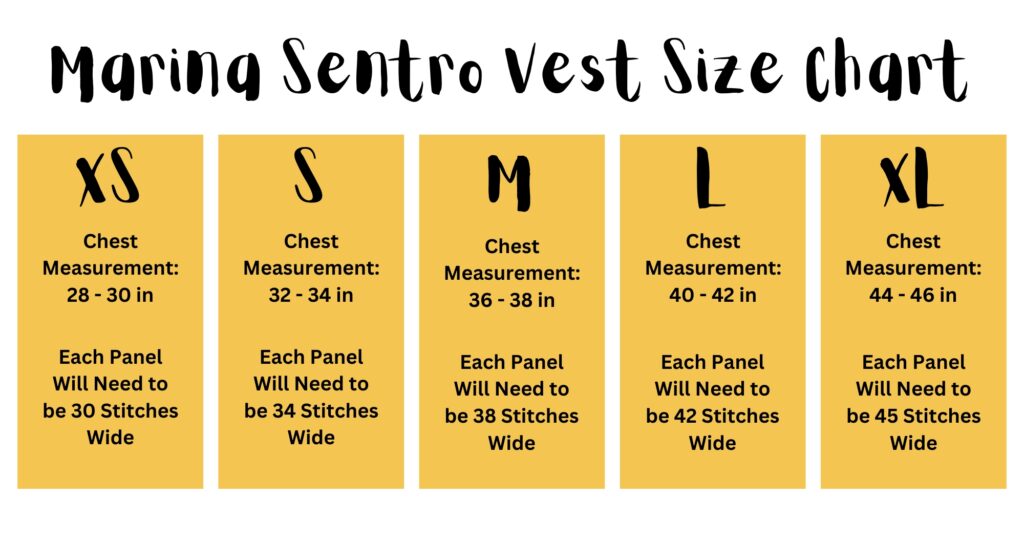
Copyright Information:
Please note that this pattern is created by, and is property of Crochet With Cookie and Crochet with Cookie reserves all rights to this pattern. This pattern cannot be resold, shared, reposted, saved to a shared google drive, modified or distributed in any other way or form with anyone else. No video tutorials can be made using this pattern, or for this pattern.
This pattern is for personal use only.
Please give credit to the pattern designer when posting, or sharing or selling products created using this pattern.

Marina Sentro Vest Pattern Begins Here:
Step 1: Creating the Panels
Cast on your chosen number of stitches in scrap yarn.
Knit about 10 rows using scrap yarn, then change colors to COLOR 1.
Knit 12 rows in COLOR 1.
Change colors to COLOR 2 (the light weight yarn), knit 32 rows.
Continue with the pattern depicted on the side. Changing colors then knitting the corresponding number of rows.
After you have completed the entire pattern, finish off with 10 – 15 more rows using scrap yarn.
Create 4 identical panels.

Step 2: Removing Scrap Yarn
Now that your panels are all finished, we need to remove the scrap yarn at the top and bottom of each panel.
From the wrong side of the panel, take a look at the row where your scrap yarn ends, and your actual project yarn begins.
We are going to sc in each of the stitches in the very first row of actual project yarn that you can see.
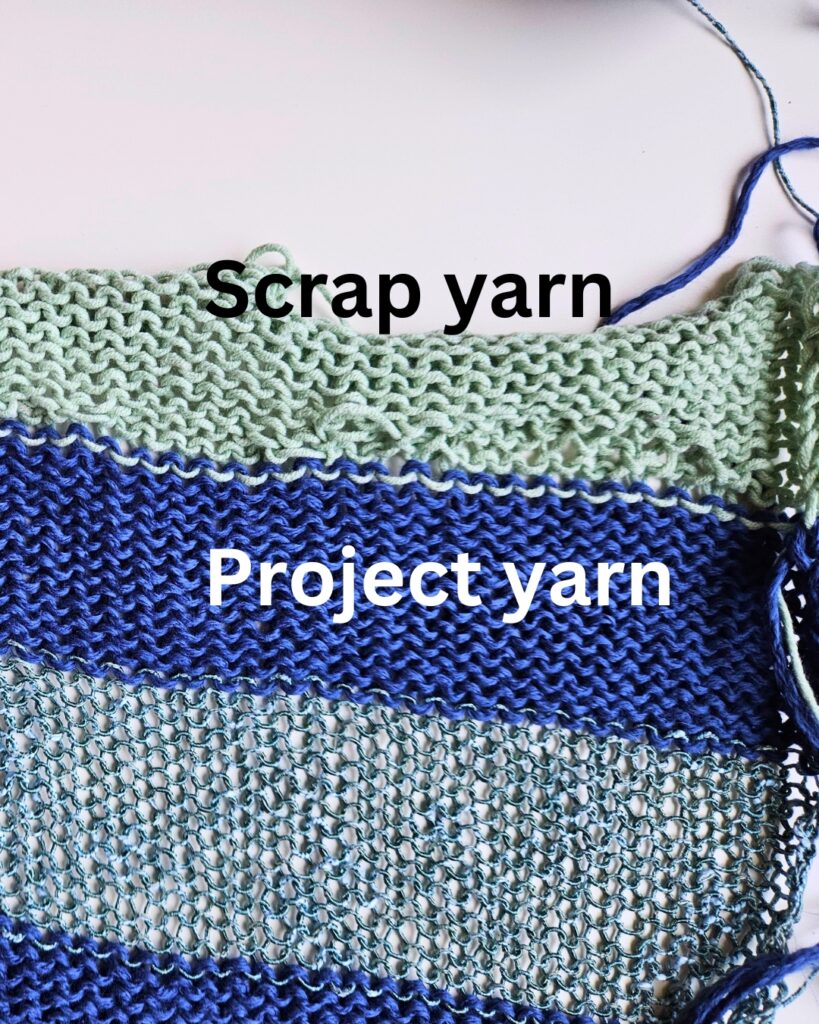
Detailed Row instructions:
Insert hook into the first st of project yarn, ch 1, sc across in each st of project yarn, then when you get to the last st, sc in the last st and cut yarn, fasten off.
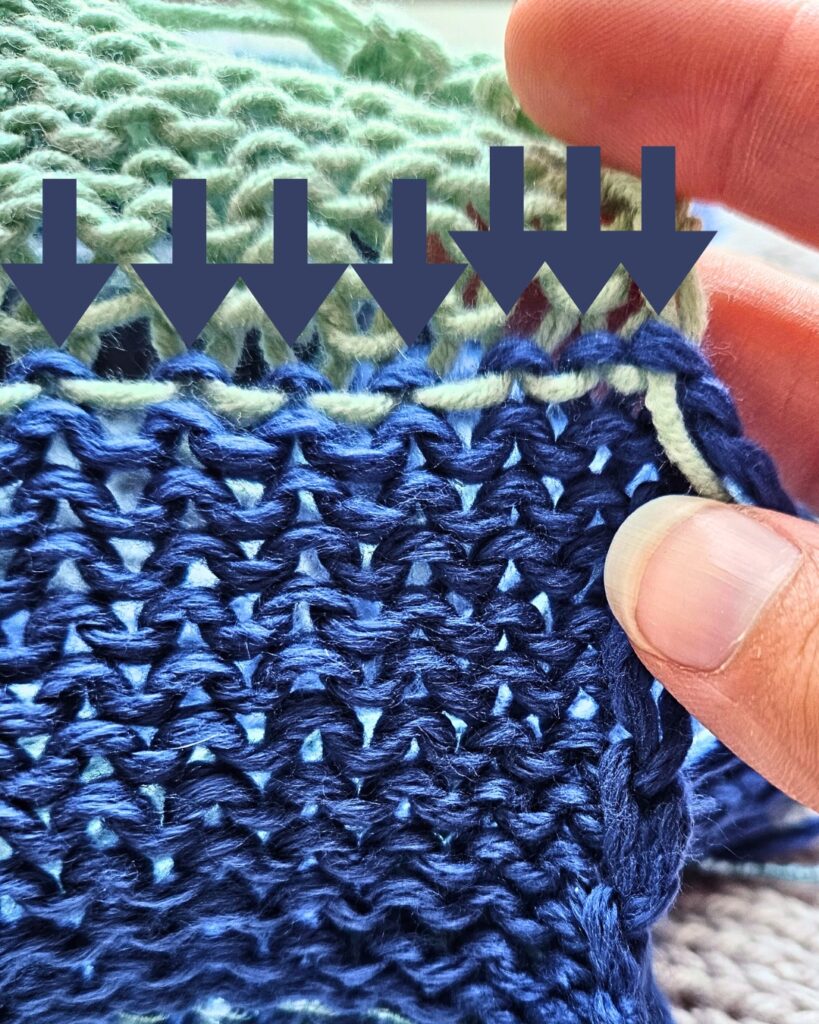
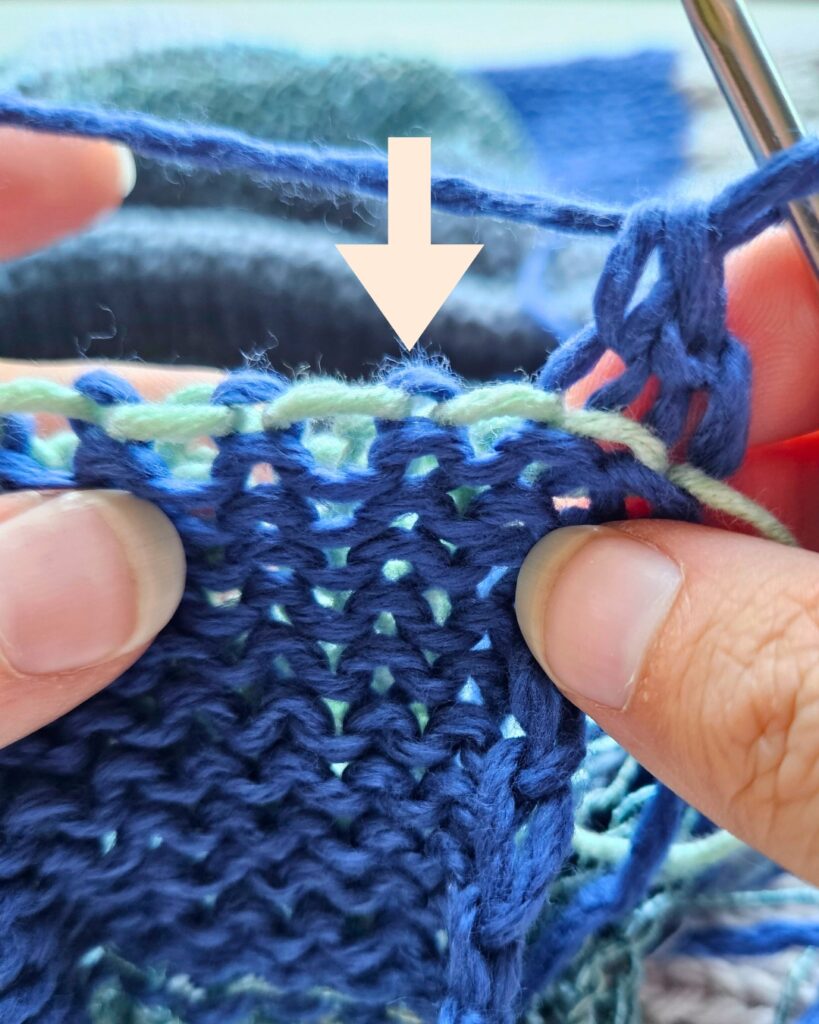
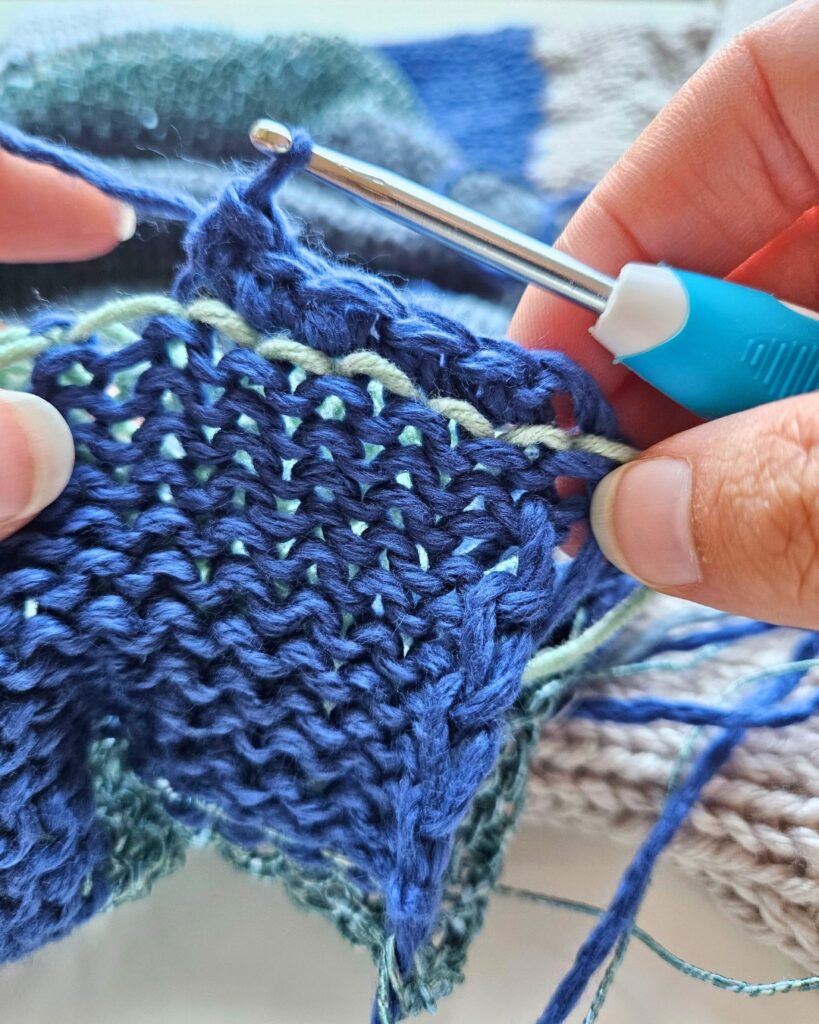

Before the Sc row (left) ————— After the Sc row (right)
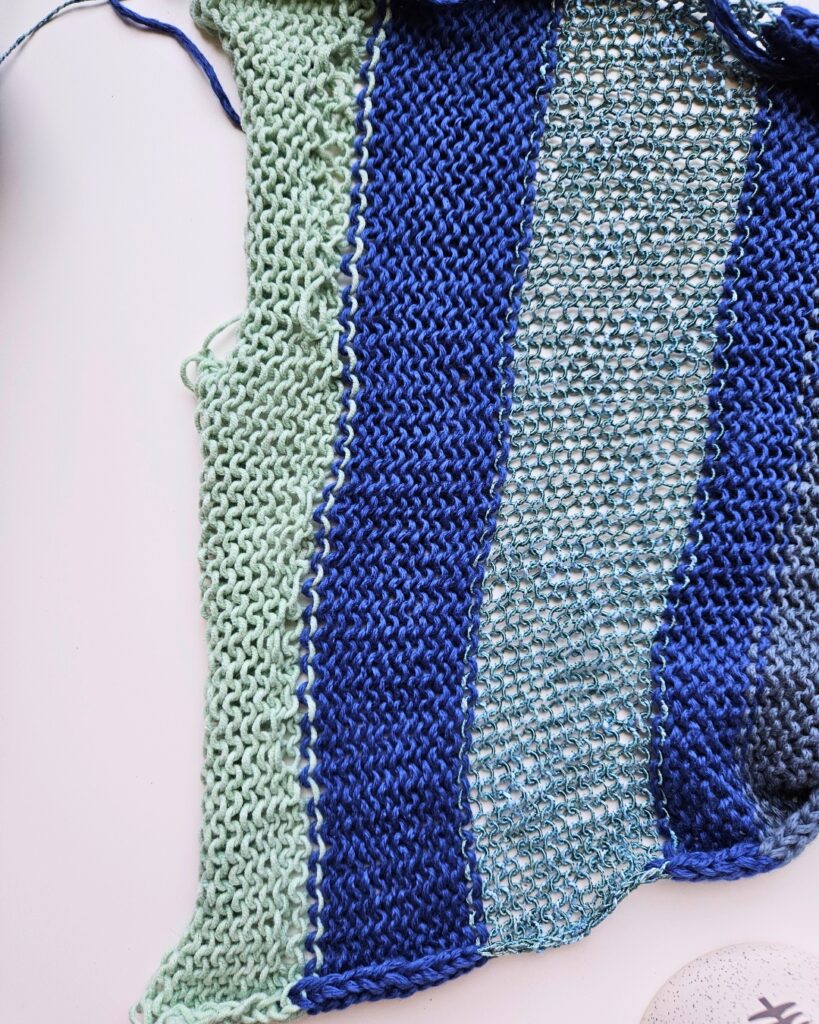

After the sc row has been completed, your project yarn is secured, so you can go ahead and remove all scrap yarn.
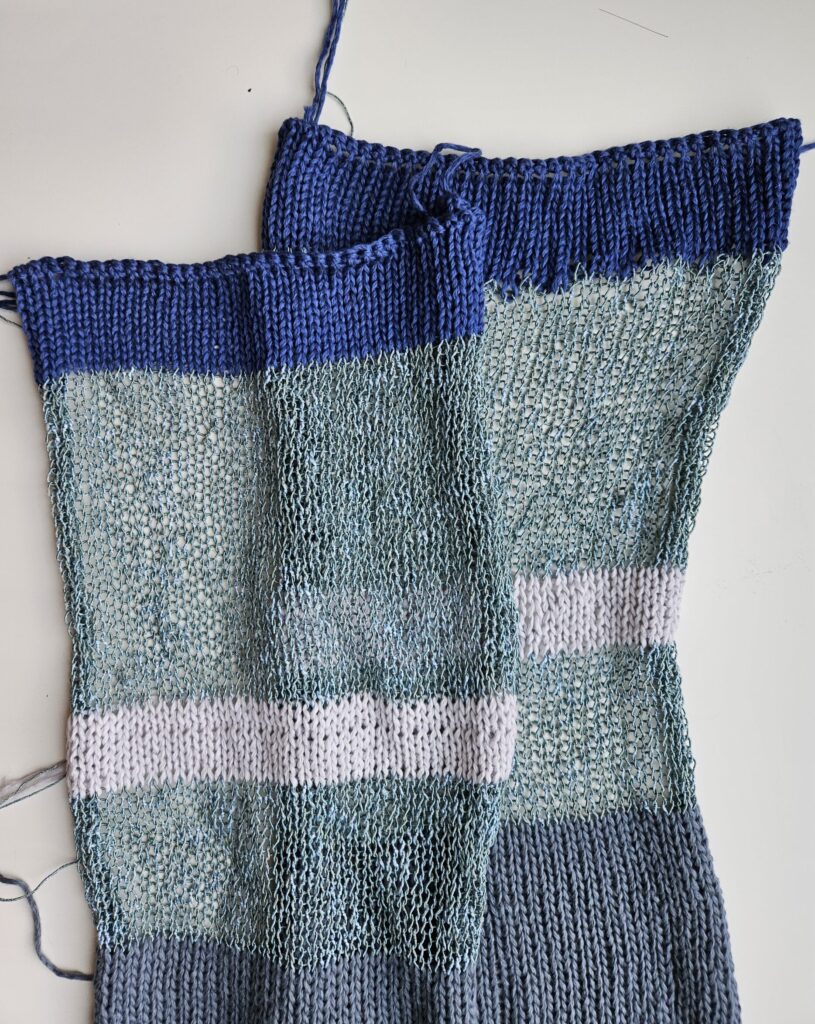
Step 3: Blocking the Pieces
Before assembling your garment, you must block the pieces. The circular knitting machines create a bit of a rolled edge and its important to straighten out the edges before assembly.
To block the pieces, submerge the panels in water, then gently wring out excess water using a towel. Then lay flat on blocking mats and pin in the exact shape/length/width that you would like the piece to look like after it is dry. Make sure all pieces are shaped exactly the same.
Even though I don’t have the perfect blocking set – and if you don’t either – I used some of the blocking combs that I had, and then used just regular sewing pins for the rest – and it worked like a charm. I also didn’t have enough exercise mats, so I blocked two pieces at a time. If you don’t have blocking mats, you can also use exercise mats like me, or you can even layer multiple towels, and pin your panels onto those!
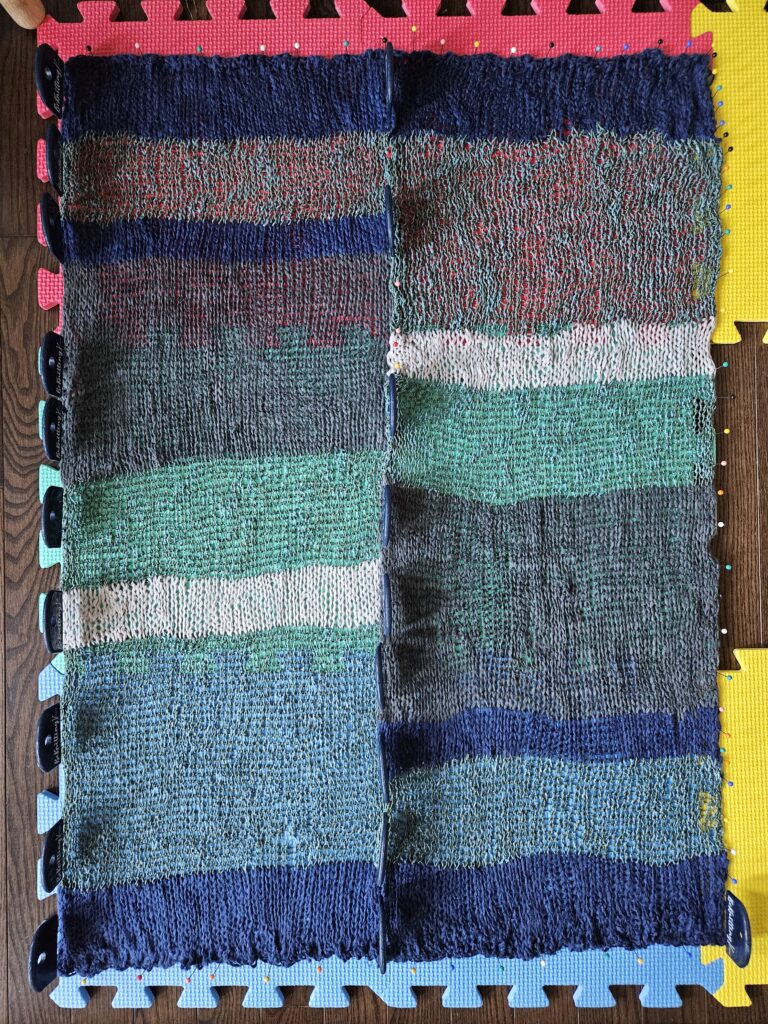
Step 4: Assembly
Once your pieces are all flat, all edges are unrolled and they have fully dried – you are ready to assemble your vest!
To assemble the back:
- Lay two panels together (fronts facing), then sl st across to connect them together.
To assemble the front – we are going to gather the two smaller panel slightly at the top seam to account for the gap at the neckline.

Right Side – Front Panel Assembly
Place the large back panel with the RS facing you, then place the smaller front panel on top of the right half of the large panel, with the WS of the front panel facing you.
Then, insert hook through both panels, starting on the far right upper corner for the seam, *sl st 6, on the 7th st, insert hook through the top panel, then into the SAME st as the last one on the back panel, * repeat this sl st sequence until the end of the row. It is completely fine if you end up stopping in the middle of the rotation.
Cut yarn, fasten off.


Left Side – Front Panel Assembly
To assemble the left side of the front, place the small left over panel flat in front of you with the RS facing. Then on top, place the large back panel (it should already have the one panel attached now) with the WS facing you. Then begin on the upper right hand corner again, but this time the smaller panel is underneath the larger one.
*Sl st 6, then on the next one, insert hook through the SAME st as before (so again the 6th st) but then sl st through the NEXT st (7th st) of the back panel*, repeat the sequence until the end of the row (its okay to end at any point, doesn’t have to be a full repetition.
Cut yarn, fasten off.


Sides:
Try on your vest, then decide how much to sl st together on the sides.
From the WS, sl st the sides together.
Step 5: Ribbing
The ribbing is completed with a crochet hook, and one of the yarns that you used in the garment.
Place the vest in front of you, with the front facing you. Then insert hook into lower left corner of the top panel – with the RS facing you, and begin there.
Row 1:
Insert hook, ch 4, sc in the 2nd loop from hook, sc, sc, then sl st into the next 2 st on the actual panel, turn
Row 2:
Sk those two st where you sl st last rnd, sc blo into the next 3 st, ch 1, turn
Row 3:
Sc blo into the next 3 st, sl st into the next 2 st on the garment, turn
Repeat rows 2 & 3 all around the garment – except when you get to a corner.
At the corners : When you are on row 3 and you sl st into a corner, do not sl st again, and go directly to row 2, then complete 3 more repetitions of row 2-3 (at the end of each row 3, sl st only once, directly into the corner st). Once this has been completed at the corner go back to repeating rows 2-3 along the straight parts of the garment.
Continue all the way around. Once done, cut yarn, fasten off.
Weave in all ends – and you are all done!




